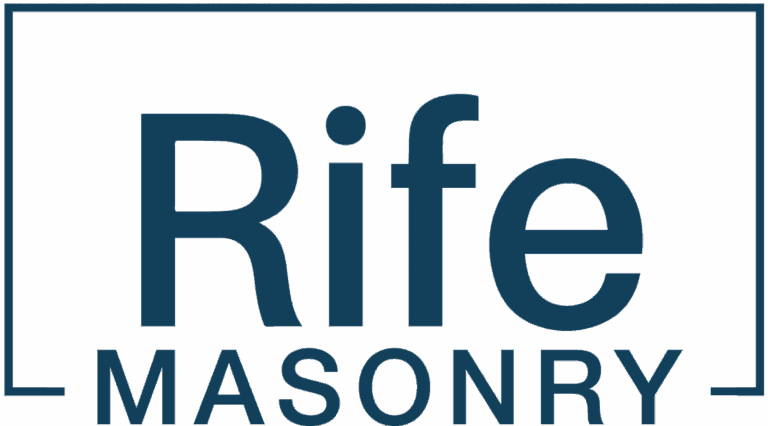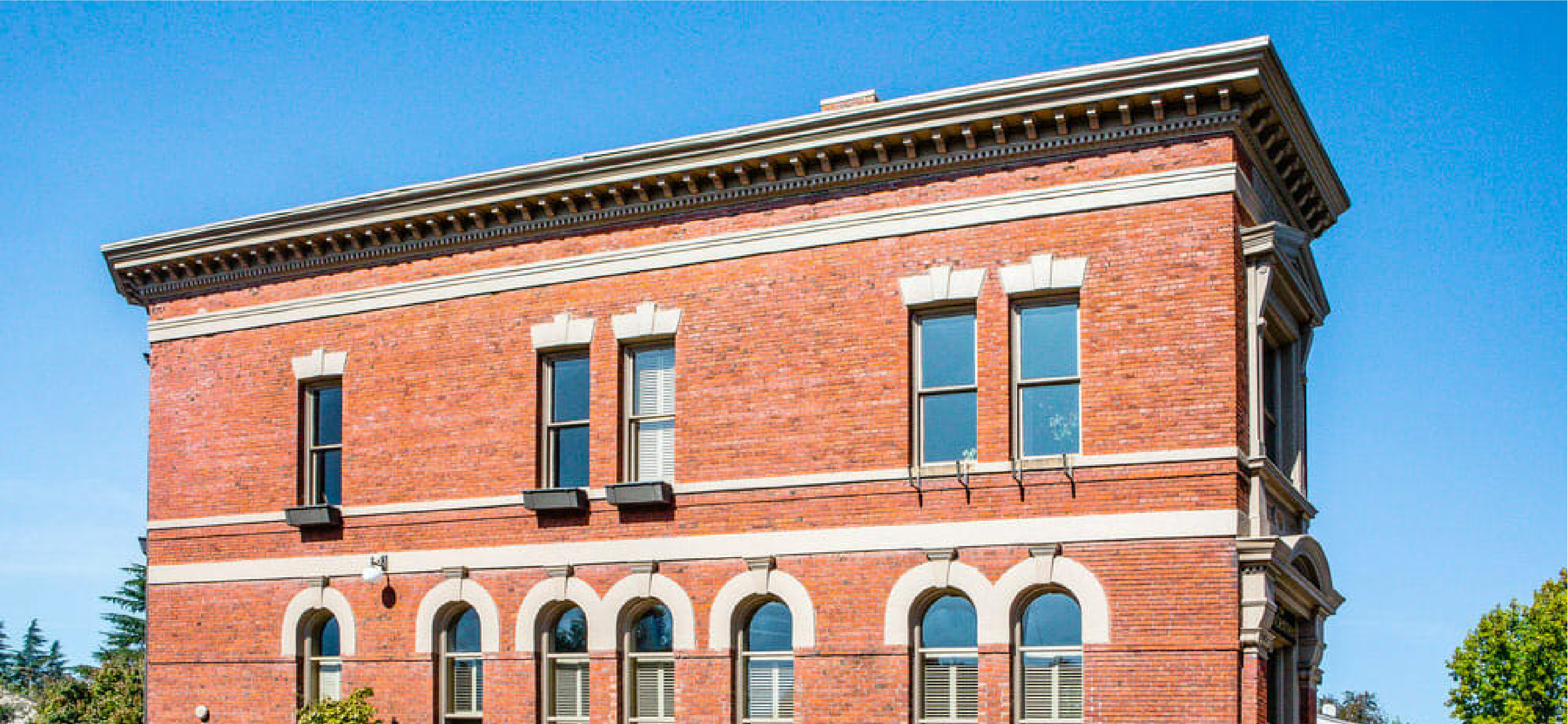If you have an older brick or stone building, there is a high likelihood that your walls are unreinforced. Unreinforced masonry walls, otherwise known as URM’s, don’t contain a reinforcing material such as a re-bar or concrete cinderblock to support its weight. Instead, the brick or stone pieces are held together by mortar and are unconnected to the building’s floors or roofs. This means that URMs are incredibly susceptible to collapsing or crumbling in the event of an earthquake. Even a few seconds of violent shaking can cause an entire brick building to give way if the walls are unreinforced.
So what can one do if they own a building or home with unreinforced masonry walls? The answer is twofold. The first step is to have a professional contractor from Rife Masonry inspect your building and perform an Unreinforced Masonry Restoration (URM) service. Secondly, you should have your masonry contractor retrofit your building for earthquakes. By taking action and reinforcing your walls, and retrofitting your building, you can help mitigate safety risks and preserve the structural integrity of your building for years to come.
Before we dive into the specifics of URM and earthquake retrofitting, we’ll first want to talk about the basics, such as what unreinforced masonry restoration is, what it entails, why you may need it, and how to know if your building is unreinforced. Look to this guide from Rife Masonry to learn everything you need to know about unreinforced masonry restoration (URM).
What is Unreinforced Masonry Restoration?
Unreinforced masonry restoration is a masonry technique used to safeguard historic or older brick buildings against structural damage and safety risks often caused by earthquakes or other natural disasters. The URM process involves securing unreinforced walls and parapets to the existing wood framing and anchoring/bracing them to the concrete in order to improve structural soundness and allow for more effective disaster prevention. Unreinforced masonry restoration can also include pinning & dowling using all-threads and helical ties and diaphragm strengthening.
How Do You Know If Your Building Is Unreinforced? (And What To Do About It)
You may have an older brick building but are unsure if the walls are reinforced or not. If it was built before 1945, then more than likely, it is unreinforced. However, there are a few simple ways to tell for sure. The first way is to look and see if your building has a “header course” of bricks. A header course is a set of bricks (all headers) facing perpendicular, end out. This row of bricks acts as reinforcement in place of a rod or concrete block. If you can see that your building has a header course, then its walls are probably unreinforced.
A second sign that your building’s walls are unreinforced is if you look behind your electrical box and see brick. You should see metal, concrete, or other material if your building is reinforced. If it is simply brick and mortar, that means a reinforcing material is not holding it up.
No matter if you just suspect your walls are unreinforced or if you know for sure, you should contact a professional masonry contractor. This way, they can come out and inspect your home or building and provide you with a straightforward answer. They then can recommend the best course of action, whether that be Unreinforced Masonry Restoration, earthquake retrofitting, or both.
What Happens to an Unreinforced Masonry (URM) Building During an Earthquake?
So what actually happens to unreinforced buildings during an earthquake? And what about reinforced buildings? Universal data supports the fact that Unreinforced Masonry buildings perform very poorly during earthquakes and other seismic events. This is primarily because they are not “ductile,” meaning they don’t absorb seismic shocks. Instead, the shocks cause the brick mortar to fail, resulting in walls or parapets cracking or breaking.
Why Are Unreinforced Buildings More Vulnerable?
URM buildings are more vulnerable to seismic activity due to the following factors:
-
1. Heaver Material
Brick and stone are generally heavier than other construction materials. The heavier the material is, the less flexible or ductile it will be during an earthquake. Furthermore, with heavier materials comes a greater risk for things such as pedestrian injuries.
-
2. Brittle and Rigid
In addition to being heavier, brick and stone are also highly brittle and rigid. This means that they cannot “take in” energy from the earthquake during seismic activity and sway side to side while remaining structurally sound. -
3. Parapets and Ornamentations
Many brick buildings have parapets or structural parts that stick out above the building’s main structure. Things such as chimneys, cornices, and railings run an increased risk of failing or breaking off during an earthquake. -
4. Old Mortar
Bricks are held together by mortar, which is old and worn out for many historic buildings. This means your bricks are even more susceptible to breaking apart or crumbling. -
5. No Reinforcing Support
Most of the time, brick walls are not actually attached to the roof or the floor. Additionally, they do not have a reinforcing material such as a re-bar or concrete cinderblock. This means that in an earthquake, the wall can actually break away from the building or collapse.
Due to these vulnerabilities, unreinforced buildings pose a significant risk to society. Failing to reinforce your walls and retrofit your building can result in the following scenarios:
-
1. Injuries
Not only can crumbling, collapsing, or falling brick harm the people inside your building, but also pedestrians on the street or nearby homeowners.
-
2. Property Damage
Crumbling bricks can create a multitude of problems for your property, from ruining the interior of your home and landscaping to, of course, rendering your home or building uninhabitable. -
3. Total Collapse
In the worst-case scenario, your brick building has the chance of a total collapse. This could mean you have the potential to damage other nearby buildings, putting people’s lives and property at risk. This also increases the possibility of you blocking emergency personnel or evacuation routes during a critical emergency.
How Unreinforced Masonry Restoration (URM) Works
So now that you know what unreinforced masonry restoration is and why you need it, how does it work? As mentioned in this article, URM uses a combination of techniques, including parapet bracing, pinning & dowling, and diaphragm strengthening.
Parapet Bracing
Parapet bracing is when any layer of brick that extends past the main structure of the building is attached to the roof with a steel angle brace. This ensures the parapet does not break away or fall off the building during an earthquake.
Pinning & Dowling
Pinning & dowling refers to using steel bolts or helical ties to secure brick walls to the roof and the floors. This increases the structural soundness of the building and makes sure its walls do not collapse or come away from the foundation.
Diaphragm Strengthening
To strengthen the entire structure of the building, plywood sheathing is installed under the floor and roofs to reinforce the brick.
All these techniques work in tandem to ensure that your brick walls and parapets do not break away, crumble or collapse. They also increase the overall strength and structural integrity of your building.
Seattle Laws Surrounding URM
In the Seattle area alone, there are about 1,100 unreinforced masonry buildings. Currently, there is a mandatory URM retrofit policy that requires all unreinforced masonry walls to be reinforced in a variety of ways. This includes:
Parapet bracing
URM walls connected to floors and roofs
Interconnected framing
This initiative was taken by the city of Seattle in order to protect historic buildings and landmarks, preserve our city’s cultural heritage, minimize injuries and safety risks, and prevent city-wide destruction.
While you are required by law to restore and retrofit your brick building, many property owners still have yet to undergo these services. If you fail to comply with these local regulations set forth by the Seattle Department of Construction and Inspections, you will be subject to violation warnings followed by a series of fines. However, there are certain situations where certain URM buildings may not qualify, or building owners can file for an appeal.
How Can You Protect Your Building Starting Today?
If you are a building owner or a homeowner that wants to take the necessary measures to ensure your property is prepared for the next big earthquake, follow these steps:
-
1. Get Your Home or Building Assessed By a Professional
We encourage you to reach out to a professional masonry contractor so they can thoroughly evaluate your building.
-
2. Restore and Retrofit Your Building
An earthquake could strike anytime. For this reason, it is imperative that you restore and retrofit your building sooner than later. -
3. Educate Your Tenants or Employees
If you own a business, apartment complex, or commercial building, the safety of your employees and patrons is paramount. You should educate yourself and your building occupants on what to do in the event of an earthquake. -
4. Schedule Routine Maintenance
Unreinforced Masonry Restoration and earthquake retrofitting are not the only preventative measures you should take. You should have your brick building regularly inspected and maintained. This includes tuckpointing, caulking, and waterproofing services.
Schedule Your Unreinforced Masonry Restoration Service in Seattle
Did you know Seattle has an over 80% chance of an earthquake of 6.8 or greater? You simply can not afford to put off your unreinforced masonry restoration service any longer.
To learn more about Unreinforced Masonry Restoration (URM) at Rife Masonry or how we can help with your brick restoration needs, call us at 206-895-6413 or request a free quote online.


